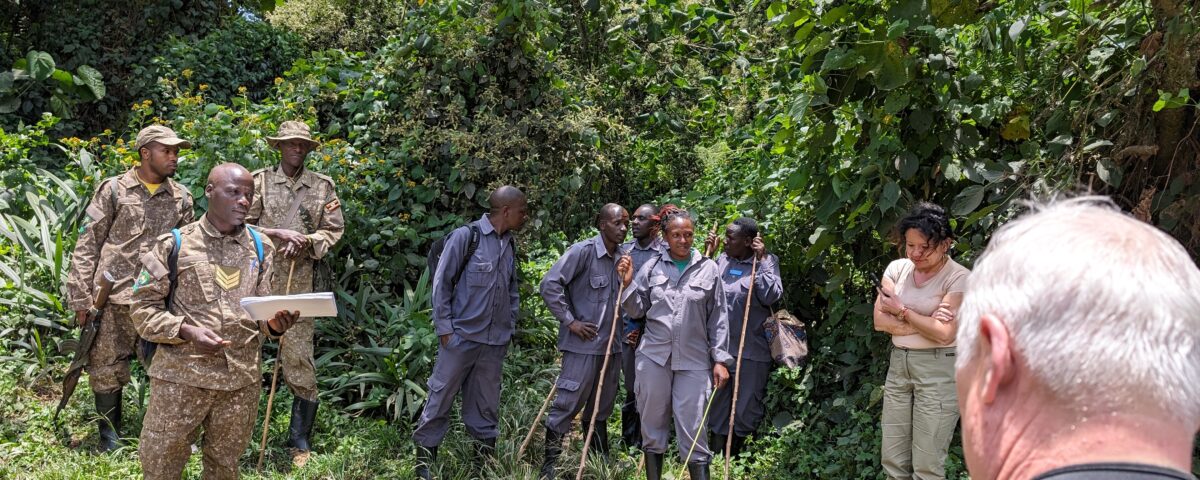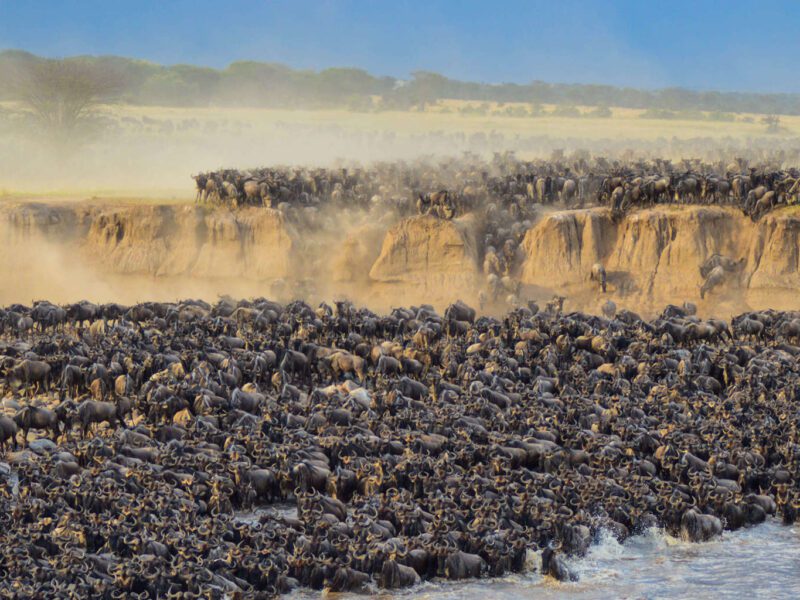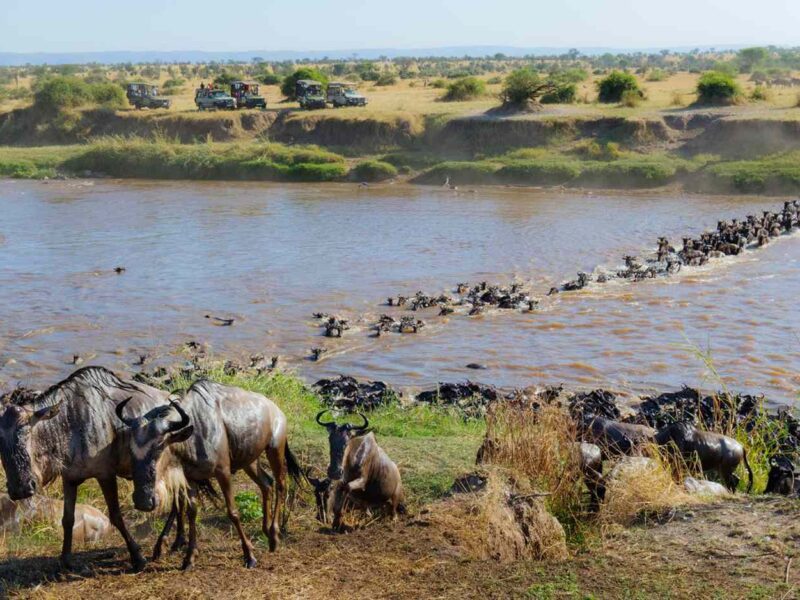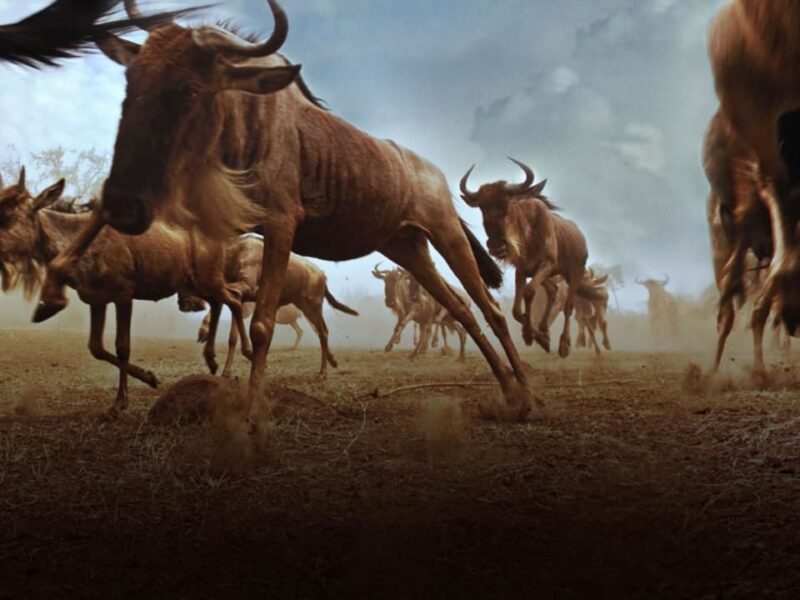
Is Gorilla Trekking Worth the Money?
May 11, 2025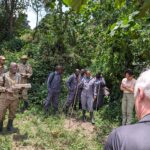
What Country to See Gorillas In?
May 17, 2025How Big is a Gorilla Trekking Group?
For any nature enthusiast or adventure traveler, Gorilla Trekking remains one of the most unforgettable wildlife experiences on the African continent. From the misty forests of Uganda’s Bwindi Impenetrable National Park to the volcanic highlands of Rwanda’s Volcanoes National Park, Gorilla Trekking allows you to come face to face with the majestic mountain gorillas in their natural habitat. But as more travelers show interest in this remarkable activity, a frequently asked question arises: How big is a gorilla trekking group?
Understanding the size of a gorilla trekking group is essential—not only for your personal planning but also for appreciating the conservation-focused nature of this experience. Gorilla trekking is carefully regulated to protect the endangered mountain gorillas and ensure a respectful and low-impact interaction between humans and wildlife. For each habituated gorilla family, only eight visitors per day are allowed to trek and spend an hour observing the group. This limit applies across both Uganda Gorilla Trekking and Gorilla Trekking Rwanda safaris.
By booking your tour with Ovacado Adventures Ltd, you gain access to expertly curated experiences that combine gorilla trekking with other exhilarating activities like chimpanzee tracking, wildlife safaris, and cultural encounters across East Africa. Whether you’re planning a diverse Uganda safari or a focused Rwanda tour, understanding the size and nature of a gorilla trekking group is key to preparing for this once-in-a-lifetime adventure.
Gorilla Group Sizes and Conservation Practices
Why Are Gorilla Trekking Groups Limited to Eight People?
To fully understand “How big is a gorilla trekking group?,” one must look at the foundations of conservation and animal welfare. Mountain gorillas are a critically endangered species, with less than 1,100 individuals remaining in the wild. They inhabit only a few protected regions in East Africa—specifically Uganda, Rwanda, and the Democratic Republic of Congo. These primates are extremely susceptible to human diseases, and their stress levels can increase with too much human presence.
As such, conservation authorities in Uganda and Rwanda have imposed strict regulations that limit the number of tourists allowed near each habituated gorilla family. A gorilla trekking group is capped at eight trekkers per gorilla family per day, and they are accompanied by trained guides, trackers, and armed rangers for safety and navigation. This small number ensures a quiet, respectful, and less intrusive encounter.
In Uganda, trekkers can explore the dense jungles of Bwindi Impenetrable National Park or the volcanic slopes of Mgahinga Gorilla National Park. Both parks offer several habituated gorilla families, and with only eight permits available per group, the experience remains exclusive and intimate. Gorilla Trekking Rwanda, conducted in Volcanoes National Park, follows the same structure with 12 habituated families available for tracking. These group limits not only protect the gorillas but also enhance the overall experience by allowing you to observe behaviors such as feeding, grooming, and even playful interactions without crowd interference.
This structure is fundamental to sustainable tourism, making Uganda Gorilla Trekking and Gorilla Trekking Rwanda not just adventures, but contributions to long-term conservation efforts.
The Trekking Experience: What to Expect in the Forest
Journeying Through the Wild in a Small Trekking Group
So, how big is a gorilla trekking group? The answer—eight people—might seem small, but it greatly enhances the experience in the wild. Gorilla trekking isn’t just about reaching the gorillas; it’s about the journey through Africa’s most biodiverse ecosystems. With a small group, the trek is more manageable, interactive, and educational. Guides have time to explain gorilla behavior, the flora and fauna along the trail, and conservation efforts in detail.
Typically, the trek can last from 1 to 6 hours, depending on where the gorilla family is located that day. Your group will navigate through thick forests, muddy trails, and steep terrain—hence the need for good hiking boots and a fair level of physical fitness. Once the gorillas are located, you’ll spend a magical hour with them, maintaining a respectful distance of about 7 meters. You’ll witness firsthand their family dynamics: the nurturing mothers, the protective silverback, the curious juveniles.
With a maximum of eight people, everyone has a clear view for photography and observation. There’s no pushing for space, no noisy distractions—just the soft murmurs of admiration and the natural sounds of the forest. This serene and respectful environment makes Gorilla Trekking one of the most ethical and impactful wildlife encounters globally.
By choosing Ovacado Adventures Ltd, you’re not only assured of a professionally guided trek but also the chance to combine your gorilla trekking experience with chimpanzee tracking, wildlife safaris, and more, making your Uganda safari or Rwanda tour a comprehensive African adventure.
Cultural and Wildlife Add-ons to Gorilla Trekking
Combining Gorilla Trekking with Other Unique Safari Activities
When planning your gorilla trekking itinerary, one of the most valuable decisions you can make is to extend your journey by combining other attractions in Uganda or Rwanda. Gorilla trekking is undoubtedly a highlight, but East Africa offers much more for those willing to explore. Many travelers choose to combine Uganda Gorilla Trekking with chimpanzee tracking in Kibale Forest National Park—home to over 1,500 chimps and known as the primate capital of the world.
In addition, Uganda’s Queen Elizabeth National Park and Murchison Falls National Park provide opportunities for a classic wildlife safari, where you can see elephants, lions, hippos, and even the elusive tree-climbing lions of Ishasha. These destinations blend seamlessly with your gorilla trekking experience, offering a rich mix of primate tracking and Big Five game viewing.
Rwanda also offers the chance to combine Gorilla Trekking Rwanda with visits to Akagera National Park for a traditional safari, and Nyungwe Forest for more primate encounters and birdwatching. Cultural add-ons like visiting the Iby’iwacu Cultural Village or the Kigali Genocide Memorial provide deeper insights into Rwanda’s resilience and traditions.
Cultural tours in Uganda may include interactions with the Batwa pygmies, an indigenous group that once lived harmoniously with gorillas in the forest. Their storytelling, music, and dance performances offer meaningful perspectives on forest life before conservation boundaries were introduced.
All these additions can be woven into a seamless itinerary by Ovacado Adventures Ltd, allowing travelers to enjoy a multifaceted safari experience while supporting community-based tourism and conservation.
Conclusion: Why Group Size Matters in Gorilla Trekking
A Small Group for a Big Impact
To summarize, “How big is a gorilla trekking group?” — the answer is eight trekkers per group, per gorilla family, per day. This is a well-thought-out number that balances visitor experience with gorilla welfare and environmental sustainability. In a world where over-tourism threatens natural habitats, the controlled, intimate nature of gorilla trekking in Uganda and Rwanda is a model of responsible wildlife tourism.
The limited group size ensures that each trekker enjoys a personal, uncrowded, and deeply moving encounter with these incredible primates. It also guarantees minimal impact on the gorillas’ habitat, reduces the risk of disease transmission, and supports long-term conservation funding through permit fees.
More than just a bucket-list experience, gorilla trekking is a journey into the heart of East Africa’s ecological and cultural richness. By combining Gorilla Trekking with chimpanzee tracking, wildlife safaris, and cultural experiences, your Uganda safari or Rwanda tour becomes a truly immersive and transformative adventure.
With the guidance and expertise of Ovacado Adventures Ltd, you’re assured of ethical travel, expert logistics, and a personalized itinerary that maximizes your time in Africa. Every step—from the moment you ask, “How big is a gorilla trekking group?” to your final day in the forest—is designed to create unforgettable memories, deepen your understanding of wildlife, and contribute meaningfully to the preservation of our planet’s most endangered species.


